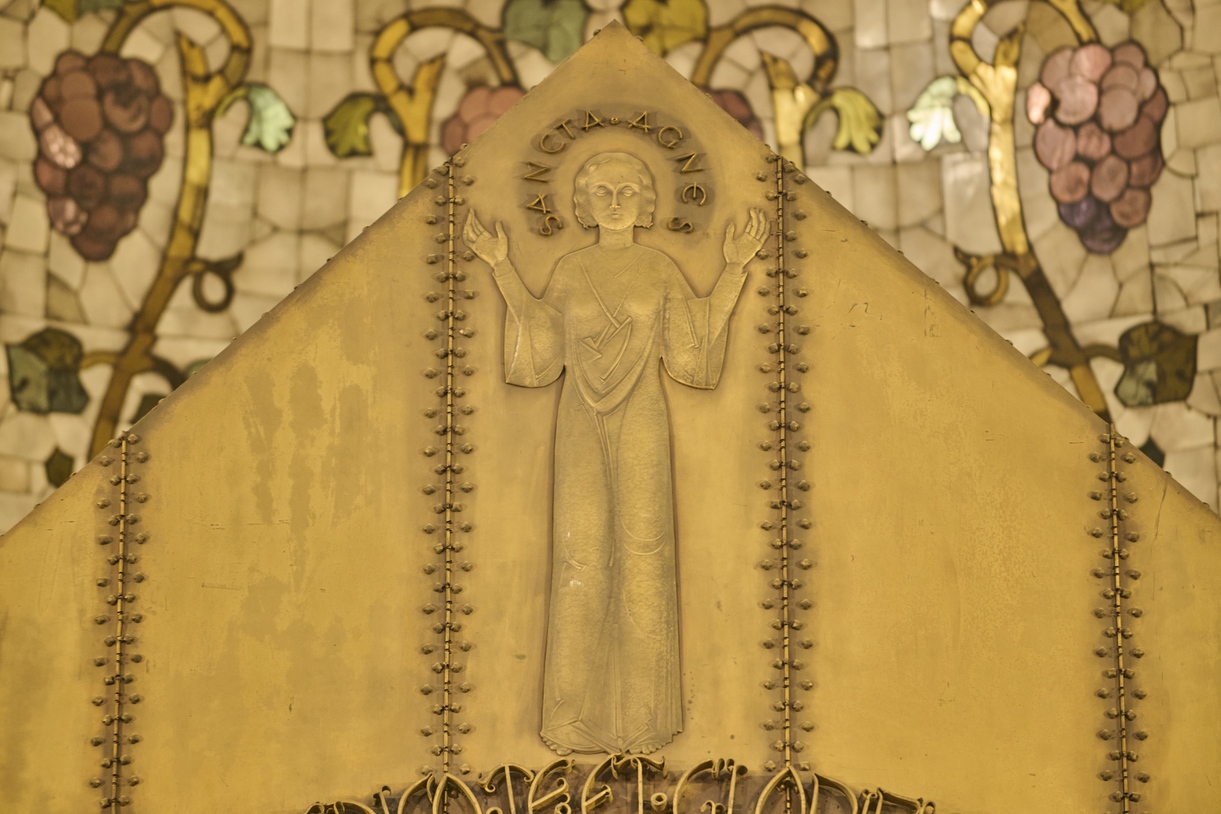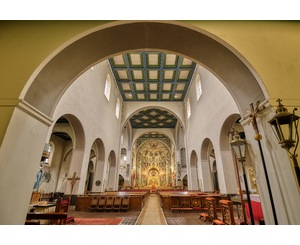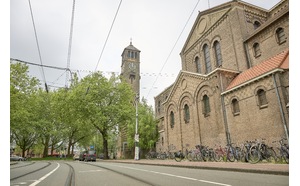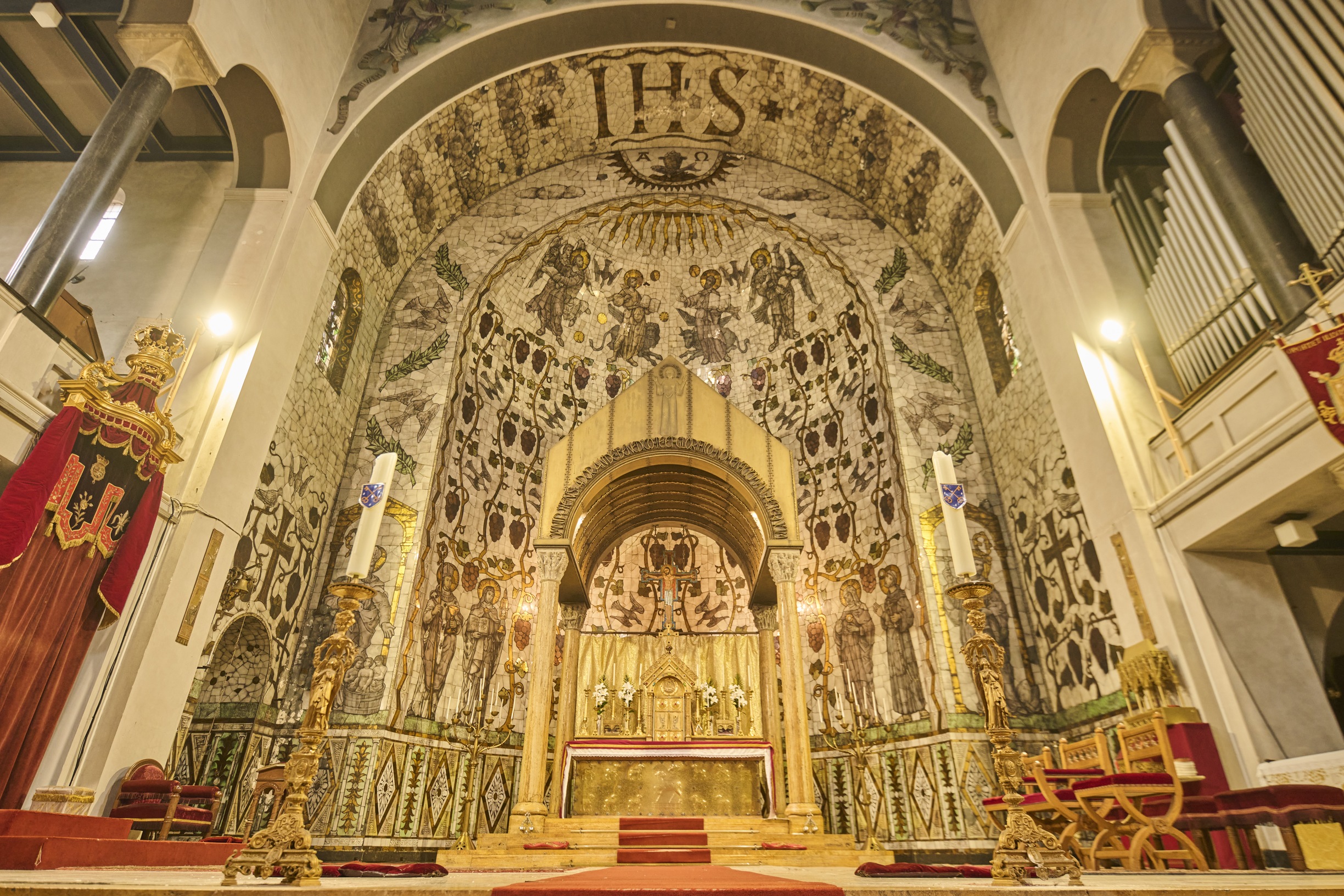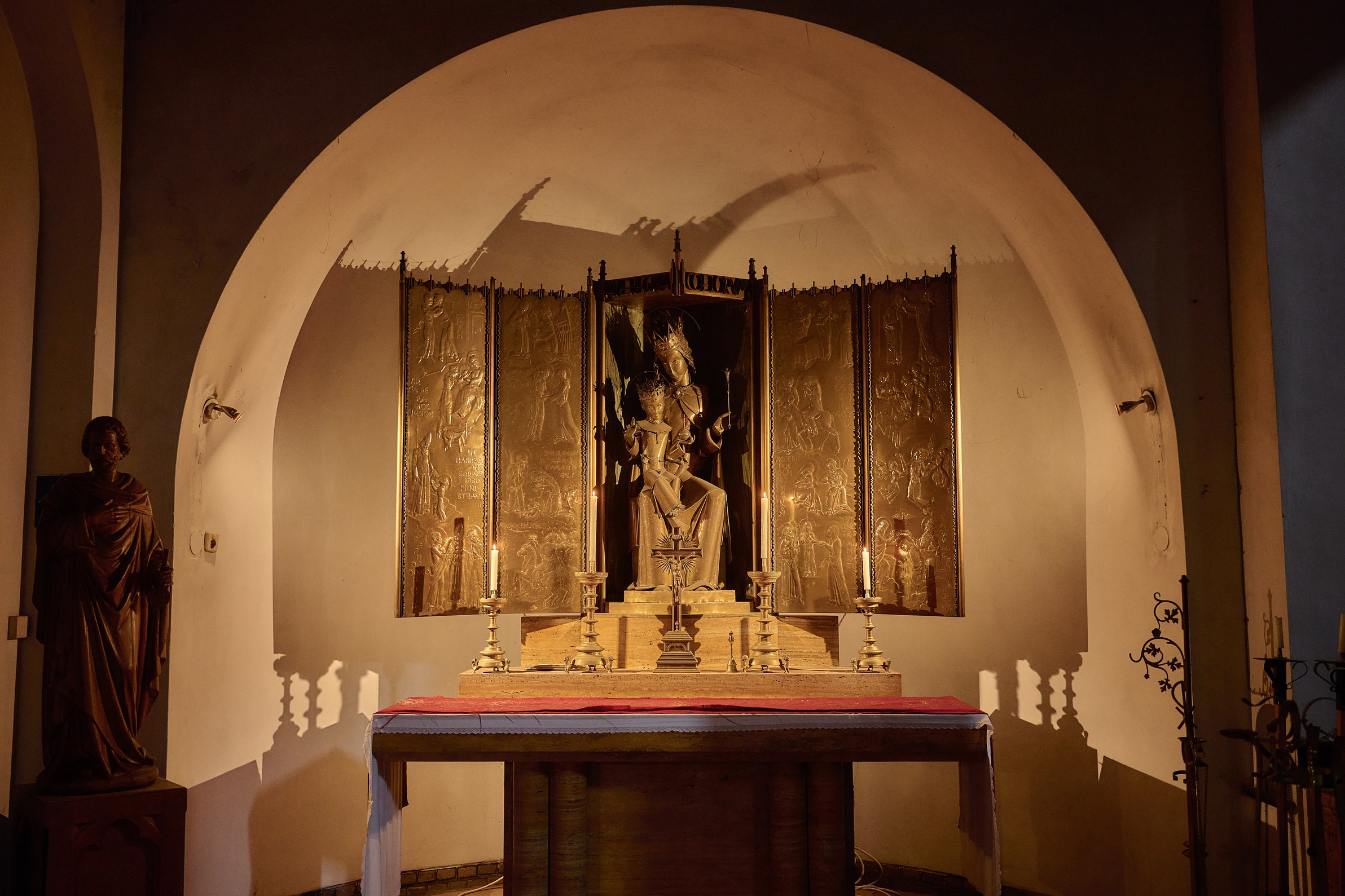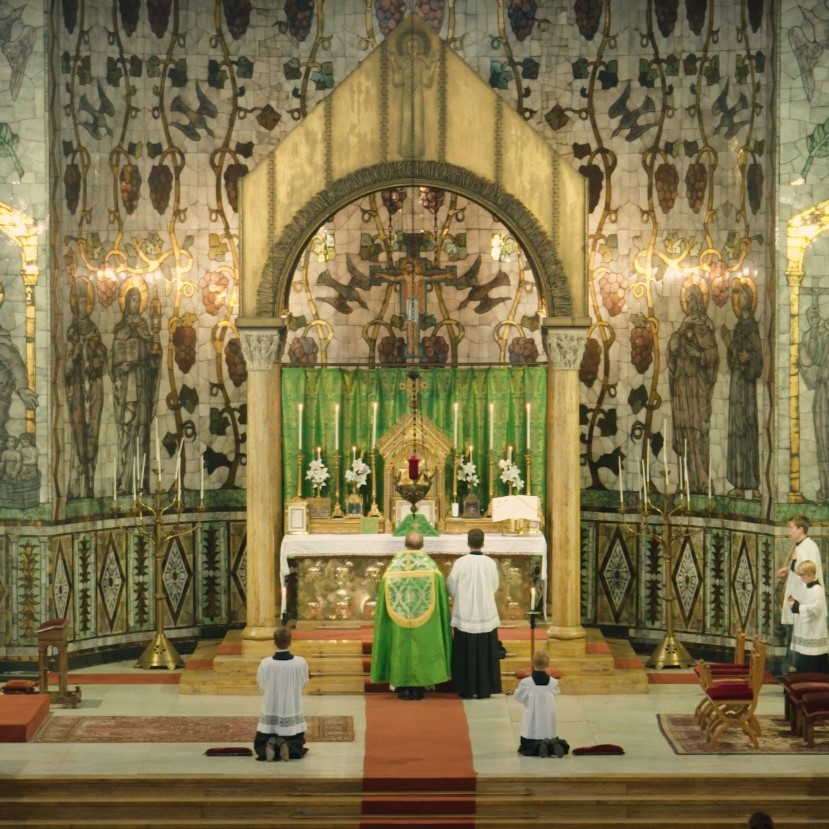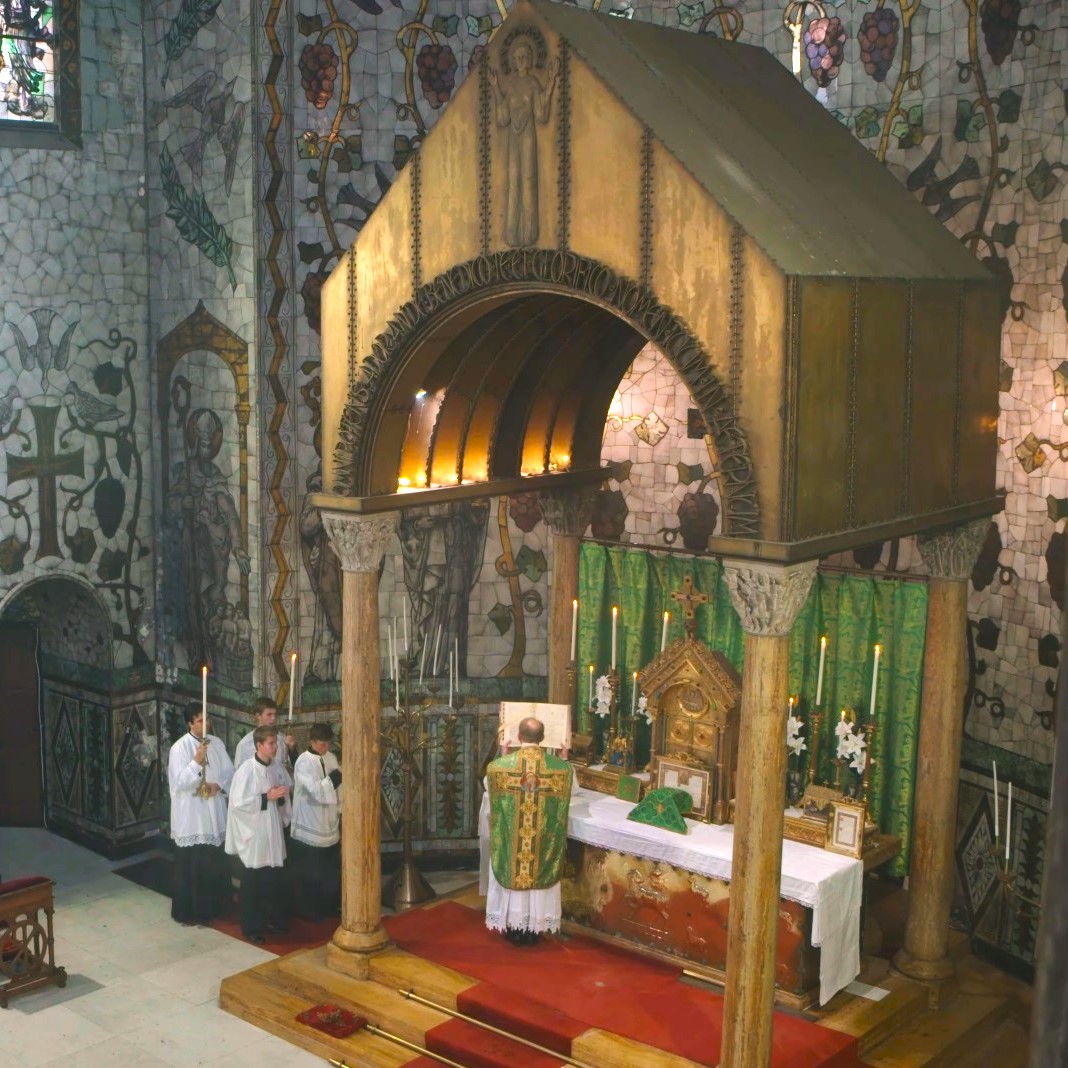In 1932, the altar of the St. Agnes Church received a new ciborium. However, the image of St. Agnes appeared to have violated the decency norms of the time.
Location
St. Agnes Church
Amstelveenseweg 163
Type
Church
Religious community
Roman Catholic Church
Object
Relief of St. Agnes on the ciborium above the main altar of the church
Maker and date
Leo Brom, Jan Eloy Brom
1932
Visit
On display in the church
An Affront to Common Decency?
In 1930, the church council of the St. Agnes Church made a risky decision. Leo Brom (1896-1965) was commissioned to construct the main altar for a fixed price. In doing so, they he was allowed complete artistic freedom with regard to the design of the altar. Upon completion, however, there came immediate criticism. The copper plates on the altar bulged, the colours of the altar curtains were not right and the tabernacle door had no handles. The most curious point of contention concerned the depiction of St. Agnes. A relief was placed on top of the ciborium of the altar in which the contours of the saint's legs were visible through her clothing. The church council notified Brom that they found this depiction to be an affront to common decency. Despite these objections, the church council did not agree to the artist's proposal to make the desired adjustments for an additional 50 guilders. As a result, St. Agnes' legs are still visible to this day.
Ciborium (altar)
Canopy above the altar, resting on four columns, made of wood, stone or metal.
Saint Agnes
Holy virgin and martyr. She was probably beheaded or burned at the stake under Emperor Diocletian in 304 at the age of about 13.
Tabernacle
Receptacle of wood or metal, lined on the inside with silk, in which the consecrated hosts are kept.
A New Style
The St. Agnes Church is among the first Catholic churches in the Netherlands that moved away from the popular neo-Gothic style. It was built at a time when customary ideas about church art were being questioned and new styles were being developed. Catholic architects and artists were reaching further back into church history. This way, a church art movement emerged that embraced both old Christian architecture and new art forms.
Neo-Gothic style
The neo-gothic style is an architectural style that flourished between c. 1830-1910, reviving medieval Gothic architecture.
Although not all the additions to the interior were immediately met with approval, chaplain Adriaan Knots and churchwarden Jan Mammen praised the church's modern style in 1936. According to them, it combined the best from all previous generations. Therefore, they did not experience any contradictions with the traditional faith. On the contrary, according to them, the style of the church indicated a renewed sense of reverence in a time of rising atheism and individualism.
Joseph Lai
Employee Our Lord in the Attic Museum
Pieter-Jan van Giersbergen
Curator Our Lord in the Attic Museum
Thanks to
Pater Martin Knudsen FSSP
Pastor of the St. Agnes Church
Last edited
July 24, 2025
Relief of St. Agnes on the Altar Ciborium, Jan Eloy and Leo Brom, 1932. Collection R.-k. parochie H. Agnes. Photography Robert Westera.
Interior and exterior: photography Robert Westera.
View on the main altar with ciborium. Photography Robert Westera.
Our Lady Altar, Jan Eloy and Leo Brom, 1932. Collection R.-k. parochie H. Agnes. Photography Robert Westera.
Knots, A.J. en Jan Mammen, St. Agneskerk Amsterdam (Amsterdam 1936).
Hogervorst, A., C. Hoogveld en Pauline Houwink, 'De Agneskerk te Amsterdam een monument uit de jaren dertig' in: De Sluitsteen. Bulletin van het Cuypers Genootschap 2:3 (October 1986).


